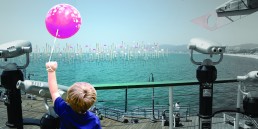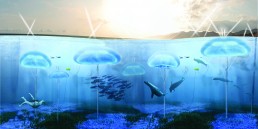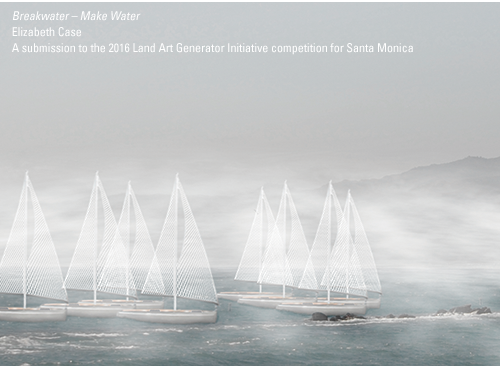
Breakwater Make Water a submission to the 2016 Land Art Generator Initiative design competition for Santa Monica
Artist Team: Elizabeth Case (University of Edinburgh)
Artist Location: Wallingford, UK
Energy Technologies: Point Absorber Buoy Wave Energy Converter (similar to Ocean Power Technologies™)
Water Harvesting Technologies: Fog Harvesting (similar to FogQuest™)
Annual Capacity: 400 MWh and 13 million liters of drinking water
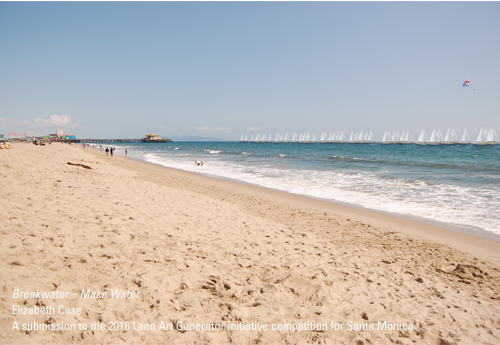
Not often is there an opportunity to generate ideas for an offshore location and to create a feature that directly responds to its maritime setting. The scale of the site means it is very visible from around the whole Bay of Santa Monica, California. Breakwater – Make Water is therefore an installation that is both eye-catching and visually sensitive to its setting.
Contributing to Santa Monica’s strong identity is the fog that comes rolling in off the Pacific Ocean almost every morning. Using a technology similar to that already successfully used in projects in South America, fog-harvest netting is shaped into sails to recall the harbour that once occupied the site.
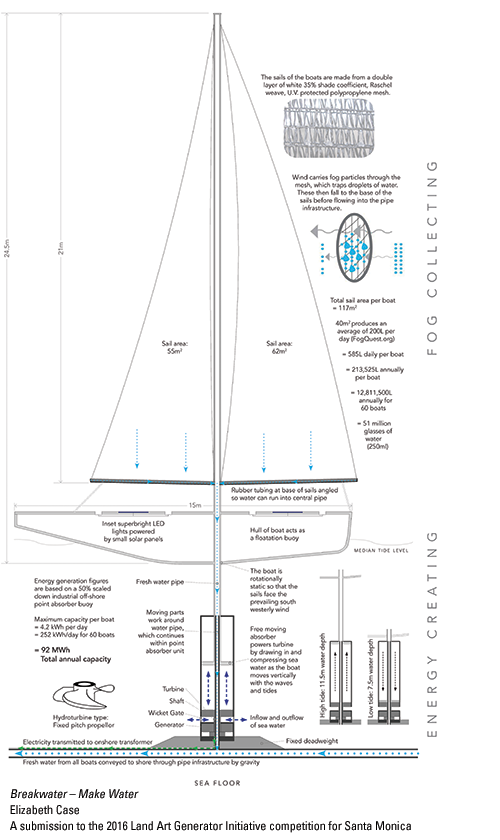
Energy generation is accomplished by way of a buoy-type wave energy converter that powers an underwater turbine by moving vertically with the waves and tides. The hull of the boat acts as the float of the buoy and the boat’s mast continues below the water to form the absorber. The turbine unit is anchored to the sea floor with a fixed deadweight, which also houses the pipe and cable infrastructure as it joins into each adjacent unit.
Sixty boats are spaced out within the site area on the far side of the breakwater. Each boat measures 24.5 meters from the base of the hull to the top of the mast and is 15 meters long. It is anticipated that the base of the hull would sit about one meter below the water level, rising and falling with a range of four meters between high and low tide. There is a minimum spacing of 10 meters between each boat to allow for efficient harvesting of fog and to provide an intermittent view of the horizon from the beach and pier.
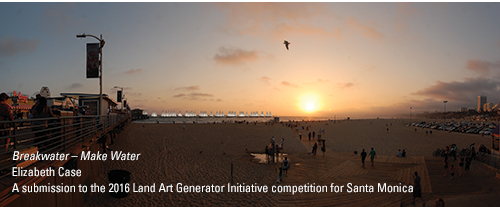
Wind carries fog particles through the material, trapping droplets of water. Gravity then causes these droplets to fall to the base of the sails before flowing into the pipe infrastructure. Resources produced would first supply the pier and waterfront businesses.
As the sun goes down over Santa Monica Bay, the fleet of sailboats comes to life with solar-powered lights that have been charging throughout the day. The programmable LED lights can either be a static glow or cycle through color combinations, allowing for infinite creative possibilities that could tie in with the promotion of special events and holidays.

